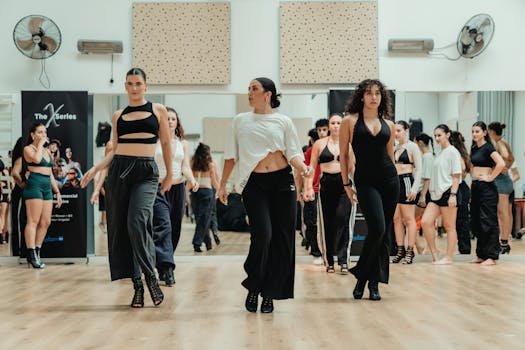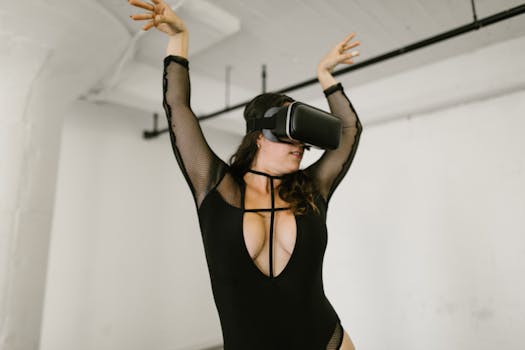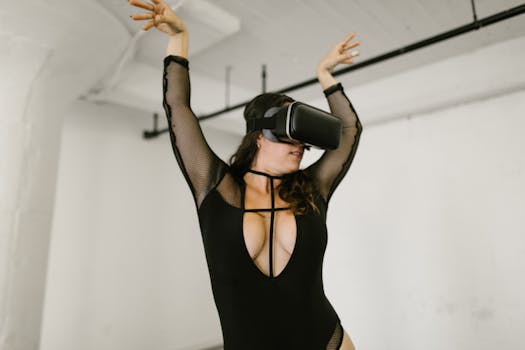Anúncios
The digital revolution has profoundly transformed many art forms, and dance is no exception. With the proliferation of technology, dancers and choreographers have found new ways to express their creativity and connect with audiences. Digital tools have become essential, influencing everything from choreography to performance representation.
As a culturally rich and dynamic art form, dance has utilized technology to enhance its impact. Innovations such as video editing software and social media have changed how dance is created, shared, and experienced. Additionally, the accessibility of these tools has democratized dance, making it possible for more voices to be heard.
From virtual reality experiences to mobile apps, the integration of digital platforms has unlocked unforeseen possibilities for both dancers and audiences. This article will explore the various layers of how digital tools have influenced dance, paving the way for new forms and expressions.
The Rise of Dance Apps
Dance apps have emerged as a revolutionary tool, offering resources for dancers of all levels. These applications provide everything from instructional videos to choreographic notation, making learning more accessible. In addition, many apps foster community and collaboration among dancers worldwide.
A significant benefit of dance apps is the engagement they inspire among users. Dancers can share their progress, receive feedback, and connect with mentors through these platforms. This social aspect enhances motivation and deepens the learning experience.
Anúncios
Moreover, dance apps often include features like personalized training programs, allowing users to tailor their learning. This level of customization allows dancers to improve specific skills at their own pace. Additionally, the wealth of information available is invaluable in expanding one’s technical knowledge.
The integration of gamification elements within these apps can also enhance user engagement. By providing challenges and rewards, dance apps motivate users to practice more frequently. Thus, the dance community benefits from innovation and increased participation.
Ultimately, dance apps exemplify how technology can enrich traditional practices. These tools provide valuable resources while fostering a sense of belonging within the global dance community.
Anúncios
Virtual Reality and Immersive Experiences
Virtual reality (VR) has introduced an entirely new dimension to the dance world. This technology focuses on creating immersive experiences that transport audiences into the dance environment. By utilizing VR, dancers can create unique narratives that traditional methods cannot convey.
One application of VR in dance is in choreography development. Choreographers can visualize and manipulate dance sequences in a three-dimensional space, leading to innovative outcomes. This spatial awareness enhances their creative process and allows for experimentation without physical limitations.
Furthermore, VR has been transformative in audience engagement. Spectators can experience performances from various angles, enhancing the overall experience. This interactive nature fosters a deeper connection between the audience and the art of dance.
In educational settings, VR can serve as a powerful teaching tool. Dance students can practice with virtual instructors, receiving real-time feedback while learning. This accessibility to high-quality instruction is revolutionizing how dance is taught.
Overall, virtual reality represents a frontier in dance that encourages exploration and creativity. Through immersive experiences, both dancers and audiences can engage with the art form more deeply than ever before.
The Role of Social Media Platforms
Social media platforms have dramatically influenced how dance is shared and discovered. These platforms allow dancers to showcase their skills to a global audience. As a result, social media has become a powerful tool for building personal brands and fostering professional opportunities.
One key impact of social media on dance is the viral nature of content. Short video platforms like TikTok and Instagram allow choreography to spread quickly. This trend has led to new dance phenomena and styles, influencing public perceptions of modern dance.
Additionally, social media promotes diverse voices and talent. Underrepresented artists can share their work without traditional gatekeeping barriers. This democratization allows for a richer mix of influences and styles within the dance community.
Many dancers now use social media for networking and mentorship. By following established professionals, aspiring dancers can gain insight and inspiration. This connection can lead to collaborations, workshops, and performance opportunities.
In summary, social media has transformed dance visibility and accessibility. It offers a platform for creativity while building community and shared experiences among dancers worldwide.
Video Technology in Choreography and Performance
Video technology has become integral to dance, influencing both choreography and performance documentation. Filmmaking techniques can enhance storytelling, allowing choreographers to convey deeper narratives. As a result, dance can reach wider audiences and has become more approachable.
Through video recording, dancers can analyze their movements. By reviewing performances, they can identify strengths and areas for improvement. This self-reflective practice is essential for professional growth, enabling dancers to refine their skills continuously.
Moreover, video technology allows for innovative ways to reach audiences. Live streaming performances opens doors to viewers who may not be able to attend physically. This has created inclusivity in dance, allowing everyone to participate in the art form.
Choreographic works can also be transformed for screen adaptations. By incorporating various camera angles and editing techniques, a performance can take on a significantly different character. This adaptability helps dance flourish in different mediums.
Ultimately, video technology serves as a conduit for artistic exploration. It enhances the depth and reach of dance, ensuring that performances resonate with a diverse array of audiences.
The Intersection of Dance and Artificial Intelligence
Artificial intelligence (AI) is sparking a transformation within the dance world. From predictive algorithms to creative programming, AI challenges traditional concepts of choreography and performance. This technology offers exciting potentials for innovation in dance creation.
AI tools can analyze vast amounts of movement data to produce new choreographic ideas. By studying different styles and techniques, AI can generate unique sequences that might not exist otherwise. This collaboration between human creativity and machine learning is groundbreaking.
Additionally, AI can enhance training methods for dancers. By providing feedback on movement quality, AI technology assists dancers in identifying areas needing improvement. This personalized approach to learning can enhance technical skills more efficiently.
Furthermore, AI opens doors to interactive performances. Dancers can engage with algorithms that adapt to their movements in real-time. This element of unpredictability allows performances to remain fresh and dynamic each time.
The intersection of AI and dance is an exciting area for exploration. This technology prompts dancers to reevaluate their art form, merging creativity with innovation to redefine possibilities.
Impact on Dance Education
The educational landscape for dance is evolving significantly due to digital tools. Online classes and resources are transforming how students learn and interact with the dance community. This accessibility allows for a more inclusive and diverse educational environment.
Many institutions have embraced online platforms to deliver training. Students can access pre-recorded classes and live sessions, enabling them to learn from anywhere. This flexibility caters to various learning styles and schedules, making dance education more reachable.
Moreover, online resources provide a wealth of supplemental material. Dancers can explore articles, tutorials, and masterclasses beyond their local studios. This abundance of information enriches their understanding and appreciation of dance.
Additionally, virtual workshops enable students to connect with renowned professionals. These experiences provide students with insights, perspectives, and knowledge that would otherwise be difficult to obtain. Such exposure is invaluable for aspiring dancers.
Ultimately, digital tools are enhancing dance education by making it more accessible and engaging. This transformation fosters a new generation of informed, passionate dancers ready to explore their artistic potential.
Conclusion
The impact of digital tools on dance is profound and lasting. From apps to AI, technology continually shapes choreography, performance, and education in the dance world. These innovations enhance creativity, accessibility, and connection among dancers and audiences.
As dancers embrace these digital advancements, the possibilities for exploration and expression continue to expand. The fusion between art and technology offers unprecedented opportunities for future generations of dancers. As the art form evolves, so too does its role in society.
In summary, digital tools are no longer optional; they are integral to the ongoing evolution of dance. As the dialogue between tradition and innovation continues, dance will remain vibrant, diverse, and relatable.
| Digital Tool | Impact on Dance |
|---|---|
| Dance Apps | Facilitate learning and community engagement. |
| Virtual Reality | Create immersive experiences for performance. |
| Social Media | Enhance visibility and audience connection. |
| Video Technology | Support choreography analysis and documentation. |
| Artificial Intelligence | Facilitate innovative choreography generation. |
- Accessibility to resources and learning.
- Building community through shared experiences.
- Encouraging innovative storytelling in performances.
- Fostering creativity through technology integration.
- Enhancing dancer education with diverse tools.



